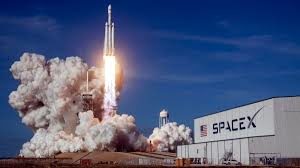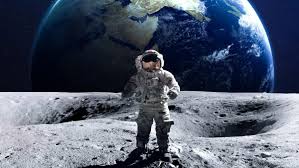NASA Working To Return To The Moon, But To Stay There
Bob Richards, who is very old now, remembers very well the gray, ghostly figures being displayed on his family’s black and white TV screen about a half-century ago. They were Neil Armstrong and Buzz Aldrin, the first humans taking a walk on the moon.

The success of Apollo 11 49 years ago on July 20 and the future portrayed in pop culture by the likes of “Star Trek” and “2001: A Space Odyssey,”, Richards was enthralled and was very much certain that routine that flights to the moon and space stations were inevitable within the coming few decades.
Just a few years ago, the United States of America canceled its big-budget moon program after continuing an epic Space Race victory over Russia, and astronauts have not left Earth’s orbits ever since.

The CEO of Cape Canaveral-based Moon Express, Richards, who is a self-described “orphan of Apollo”, is now very much confident that Americans are soon returning to the lunar surface within a decade. But this time not for a visit but for a stay.
“It’s a different paradigm, to have economics introduced to exploration and science,” said Richards, whose company is trying to lower the cost of robotic lunar missions. “It has to be part of a growing, continuing expansion of the human economic and social sphere to the moon, then to Mars, and eventually to the stars.”
As per the new direction by the Trump administration, NASA has got plans to have partner companies like Moon Express so that it can accomplish to fly small, robotic landers by carrying scientific instruments to the moon, very soon next year.
It’s going to be a good start to public-private partnerships that work with an aim to help companies develop increasingly capable landers much more quicker and at more lower cost than NASA could on its own. It can prepare to launch a first medium-size lander as a demonstration mission as soon as 2022 which will help for future designs of a larger, human-class lander.
A similar type of approach was used to successfully keep the International Space Station supplied since the space shuttle’s retirement seven years ago.
The research complex gets its cargo deliveries in low Earth orbit by the SpaceX and Northrop Grumman rockets and spaceships.
With the help of space agency NASA, in the process, SpaceX’s Falcon 9 has become the nation’s most frequently used rocket and in turn grew the U.S. launch market by getting commercial satellite mission that had moved overseas.
“What happened to the commercial launch industry is about to happen to the commercial lunar industry,” said Richards. “I think there are very strong analogies between the two.”
Moon Express hopes to fly its missions to the moon more than once a year for government, commercial or university customers. NASA had partnered with other small lander companies which include Astrobotic and Masten Space Systems.
The proposed partnerships with NASA also have the potential to get leverage of the interests of billionaires who believe in a long sustained lunar program. One among them is Amazon.com founder and CEO Jeff Bezos who was one of the people who was very much influenced by seeing Apollo 11 as a boy.
Bezos backs the Blue Origin to the tune of USD 1 billion per year and the company is now is in the process of developing rockets to fly people and has a proposal of a “Blue Moon” delivery service for shipping heavy cargo that could easily establish and support a lunar outpost.
“I think we should build a permanent human settlement on one of the poles of the moon,” Bezos said last year. “It’s time to go back to the moon, but this time to stay.”
You May Also Read: Facebook Faces Delay Hurdles To Launch WhatsApp Payments In India